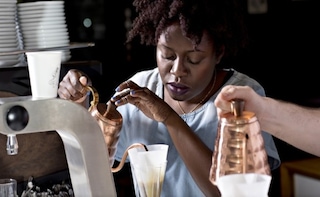Bim Adewunmi learns how to brew coffee correctly. Photograph: Teri Pengilley/The Guardian
Advertisement
Advertisement
Advertisement
Advertisement
For the latest food news, health tips and recipes, like us on Facebook or follow us on Twitter and YouTube.
Advertisement
Tags:
